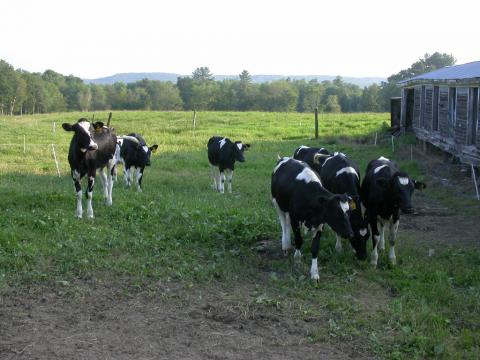A Ten-Point Plan to Reduce Heifer Udder Infections

Heifer mastitis is a multifactorial disease that threatens production and udder health in the first and subsequent lactations. As early as the 1960s, numerous researchers established the standards for contagious mastitis control on dairy farms. From their work came the five-point mastitis control program which was later developed into the National Mastitis Council ten-point mastitis control plan that successfully reduced the prevalence of contagious mastitis on many farms. This program is based on an integrated strategy to prevent and control heifer mastitis which includes goal setting, assessment of the current farm systems, application of appropriate farm-specific interventions and monitoring of outcomes.
A farm specific ten-point program to prevent and control udder infections in heifers includes:
- Improvement of general udder health management at the farm level to decrease the pressure of infection with udder pathogens from older cows to heifers
- Control cross-suckling in calves and young stock
- Implement an effective and efficient fly control system
- Keep young and first time pregnant heifers in a clean and hygienic environment and separate from older animals. Provide as much attention to this group of animals related to hygiene and cleanliness as is spent on lactating animals
- Avoid any nutritional deficiency. Monitor vitamin E and selenium levels when any doubt exists, especially in relation to clinical mastitis. Zinc, copper and vitamin A play a role as well and could be checked if there is doubt
- Minimize the risk of negative energy balance before and after calving through appropriate transition feeding systems
- Reduce the incidence of udder edema through optimized peripartum management
- Minimize stress around calving (e.g., by not moving heifers to the calving pen when already in labor) and minimize incidence of dystocia and peripartum disease
- Consider use of internal teat sealants prepartum where there is a high risk of environmental mastitis in the peripartum period, and
- Use prepartum antibiotic treatment in heifers under certain conditions only:
- Under the supervision of the herd veterinarian within the context of a valid veterinary/client/patient relationship
- After quantification of the problem and identification of major pathogens (not coagulase-negative staphylococci) as the cause through culturing
- Choice of antibiotics should be based on antimicrobial susceptibility testing
- Test for residues before every milk delivery
- Upgrading of management at the same time: Discontinue treatment as soon as new management strategies become effective.
There are two rules of thumb to determine when a dairy herd is considered to have a problem with udder infection in heifers: 1) if more than 15 percent of heifers have clinical mastitis around calving; or 2) if more than 15 percent of all heifers have a first test-day somatic cell count (measured between 10 and 35 days in milk) greater than 150,000 cells per ml.
If these thresholds are exceeded prevention and control measures should be undertaken and milk culture samples should be put in place.
Sources:
1) National Mastitis Council
2) Invited Review: Mastitis in Dairy Heifers: Nature of the Disease, Potential Impact, Prevention and Control.” Journal of Dairy Science, Vol. 95, Issue 3, 2012. p. 1025–1040.
